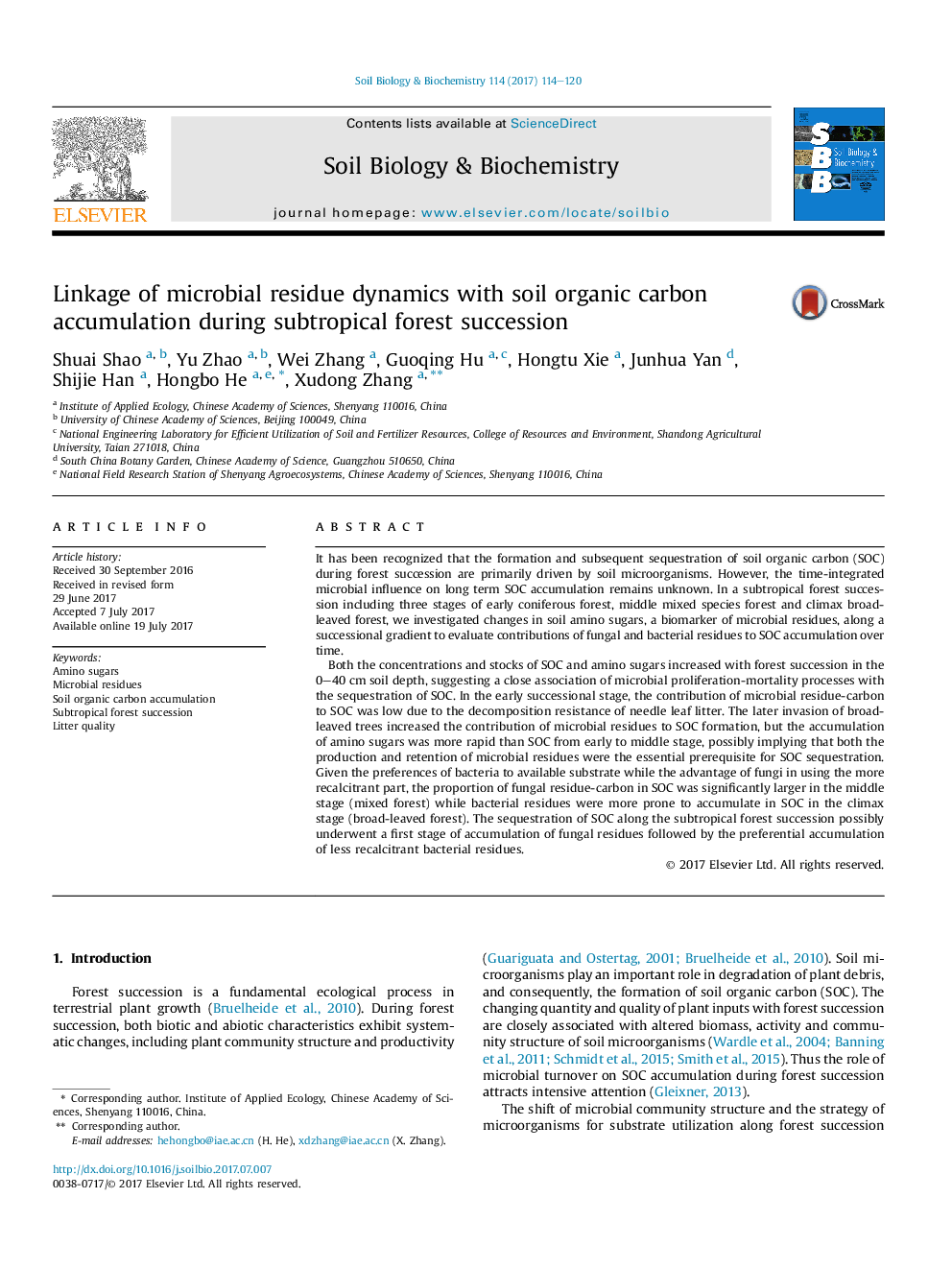| کد مقاله | کد نشریه | سال انتشار | مقاله انگلیسی | نسخه تمام متن |
|---|---|---|---|---|
| 5516312 | 1542570 | 2017 | 7 صفحه PDF | دانلود رایگان |
- Natural succession of a subtropical forest favors microbial residue retention in soil.
- Dynamics of bacterial and fungal residues are dependent on litter decomposability.
- Fungal residue production contributes more to SOC stabilization than to accumulation.
- Labile input improves SOC content through an enhanced bacterial residue contribution.
It has been recognized that the formation and subsequent sequestration of soil organic carbon (SOC) during forest succession are primarily driven by soil microorganisms. However, the time-integrated microbial influence on long term SOC accumulation remains unknown. In a subtropical forest succession including three stages of early coniferous forest, middle mixed species forest and climax broad-leaved forest, we investigated changes in soil amino sugars, a biomarker of microbial residues, along a successional gradient to evaluate contributions of fungal and bacterial residues to SOC accumulation over time.Both the concentrations and stocks of SOC and amino sugars increased with forest succession in the 0-40Â cm soil depth, suggesting a close association of microbial proliferation-mortality processes with the sequestration of SOC. In the early successional stage, the contribution of microbial residue-carbon to SOC was low due to the decomposition resistance of needle leaf litter. The later invasion of broad-leaved trees increased the contribution of microbial residues to SOC formation, but the accumulation of amino sugars was more rapid than SOC from early to middle stage, possibly implying that both the production and retention of microbial residues were the essential prerequisite for SOC sequestration. Given the preferences of bacteria to available substrate while the advantage of fungi in using the more recalcitrant part, the proportion of fungal residue-carbon in SOC was significantly larger in the middle stage (mixed forest) while bacterial residues were more prone to accumulate in SOC in the climax stage (broad-leaved forest). The sequestration of SOC along the subtropical forest succession possibly underwent a first stage of accumulation of fungal residues followed by the preferential accumulation of less recalcitrant bacterial residues.
Journal: Soil Biology and Biochemistry - Volume 114, November 2017, Pages 114-120
